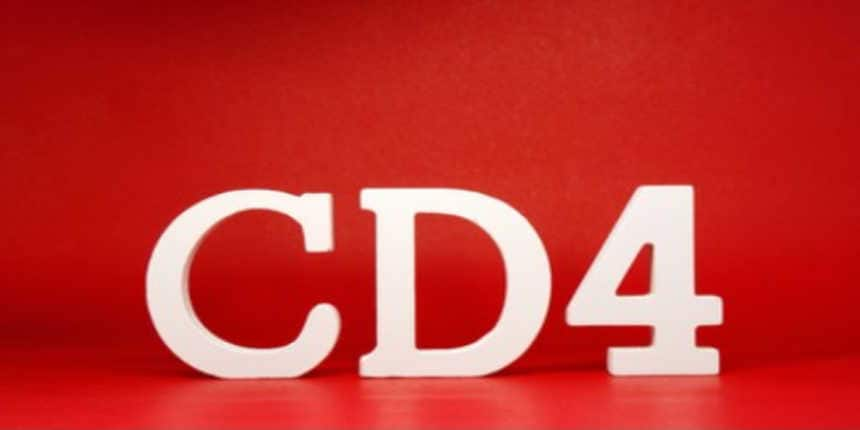CD4 Full Form
What is the full form of CD4?
CD4 stands for Cluster of Differentiation 4. It is a term defined in molecular biology. It is a glycoprotein that serves as a receptor for the T helper cells that are called T cell receptors (TCR). CD4 cells are found on the surface of immune cells such as T helper cells, macrophages, and dendritic cells. It was discovered in the 1970s and was originally known as leu-3 and T4 before being named CD4 in 1984. In humans, the CD4 gene codes for the CD4 protein.
- What is the full form of CD4?
- Details about CD4
- Discovery of CD4 cells
- Functions of CD4 cells
- CD4 cells’ role in HIV patients

Details about CD4
CD4 cells are specific. With the loss of CD4 cells in HIV cases, the immune system and its responses get reduced, which in turn reduces the capability of cells to fight and attack pathogens. If a large number of CD4 cells are lost, HIV- infected people are at risk of developing AIDS, which leads to opportunistic infections. CD4 cells are indicators of our immune system. The normal CD4 cell count ranges between 500 to 1500 cells per cubic millimetre of blood sample. In serious cases of HIV, the CD4 cell count decreases rapidly.
Discovery of CD4 cells
CD4 was discovered in 1979 by Ellis Reinherz in Stuart Schlossman’s lab and named as helper T lymphocyte antigens.After four years of discovery, Luc Montagnier’s group reported that HIV-1 was contained within the CD4+ T cells. The fraction of cell count isolated from a patient with HIV-1. Then it was noted that infected people have depleted CD4+ T cells as compared to the derived lymphocyte cultures of healthy people.
In 1984, two studies showed that CD4 is critical for HIV-1 entry. Robin Weiss and colleagues stated that CD4 cells play a role as an HIV-1 receptor. In 1985,the CD4 gene was cloned by Richard Axel and his colleagues.
Functions of CD4 cells
As described earlier, CD4 cells are co-receptors of T cell receptors. These interact with the antigen-presenting cells. The T cell receptors and CD4 cells secure definite sections of the antigen-presenting MHC (multi histocompatibility complex) class II molecules. The extracellular D1 domain of CD4 cells binds to the 2 of MHC Class II, allowing tyrosine to bind to the cytoplasmic tail of CD4 and, later, the cytoplasmic domains of CD3.
The signals sent by tyrosine phosphorylation lead to the activation of transcription factors, thereby promoting the activation of T cells.
CD4 cells’ role in HIV patients
CD4 T-cells act as helper cells because they stimulate the immune system to respond to infections rather than neutralizing them.CD4 cells aid in the production of antibodies, helping to fight against foreign particles. For HIV to infect host cells, cells have to multiply, and these CD4 cells become its prime targets.
HIV attaches to the cells during infections and attacks their genetic content, which alters the genetic coding of the host and finally generates HIV virions. Due to this, the CD4 cells of the host are destroyed. Hence, the capability to stimulate immune responses to defend any foreign particle declines, eventually reaching a point where the body becomes susceptible to opportunistic infections.
Frequently Asked Questions (FAQs)
A type of lymphocyte. CD4 cells help coordinate the immune response by stimulating other immune cells such as macrophages, B cells, and CD8 cells to fight infections.
These cells are cytotoxic cells that cause apoptosis in cells and present antigens on multi-histocompatibility complex) class I cells. Hence, CD4 is crucial for responses against intracellular viruses and bacteria.
The basic difference between CD4 and CD8 T cells is that the CD4 T cells are the helper T cells that assist blood cells to produce an immune response, while the CD8 T cells are the cytotoxic T cells that cause cell death either by lysis or apoptosis. CD4 T cells produce cytokines to activate immune cells, while CD8 T cells destroy virus-infected cells and tumor cells.
The normal count of CD4 cells ranges between 500-1500 per cubic millimeter of blood. When a person gets infected with HIV, the CD4 cells are destroyed. Therefore, CD4 count helps to determine the health of HIV infected persons regularly.
The extracellular D1 domain of CD4 cells binds with the β2 of MHC Class II. Hence,it is represented in MHC class ii.